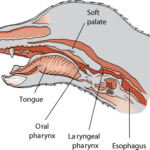What Are Dog Withers
Understanding Dog Withers: Anatomy, Function, and Care Tips
Dogs are amazing creatures that bring joy, companionship, and protection to millions of people around the world. Whether you have a loyal mutt or a pampered purebred, you want to give your furry friend the best care possible. One aspect of canine anatomy that many dog owners may not be familiar with is the withers. What are dog withers, why are they important, and how can you keep them healthy? In this article, we will explore these questions and more.
Anatomy of Dog Withers
Dog withers, also known as the scapular spine or dorsal ridge, refer to the highest point on a dog’s back where the shoulder blades meet. This area is located between the neck and the back, and it forms a natural indentation that separates the neck from the rest of the body. The term “withers” comes from an Old English word meaning “the highest part of the back of a horse or other quadruped.”
The withers consist of several bony structures that serve as attachment points for muscles and ligaments that control movement and posture. The main bones involved are the scapulae (shoulder blades), which are flat triangular bones that attach to the humerus (upper arm bone) and form a joint called the shoulder joint. The withers also include the spinous processes of some thoracic vertebrae (backbones), which protrude upward like spikes and provide support for the muscles that move and stabilize the shoulders.
Function of Dog Withers
The withers play a crucial role in a dog’s physical performance, especially in activities that involve running, jumping, or pulling. When a dog runs or jumps, its forelimbs generate much of its propulsion by pushing against the ground. The force generated by these movements is transmitted through the shoulders and into the rest of the body, including the hindquarters. The withers act as a pivot point for this force, allowing the dog to balance and coordinate its movements effectively.
The withers also affect a dog’s posture and gait. A well-developed wither slope (the angle between the neck and the back) is desirable in many breeds, as it promotes a balanced and efficient stride. A dog with a steep or straight slope may appear awkward or uncoordinated, while a dog with a low or sagging slope may have difficulty breathing or carrying weight on its back.
Care Tips for Dog Withers
To keep your dog’s withers healthy and functional, you should pay attention to several factors that can affect their condition:
– Nutrition: Dogs need a balanced diet that provides adequate amounts of protein, vitamins, minerals, and essential fatty acids to support their musculoskeletal system. Feeding your dog high-quality commercial food or homemade meals can help prevent nutritional deficiencies that can lead to bone or joint problems.
– Exercise: Dogs need regular exercise to maintain their muscle tone, flexibility, and cardiovascular health. However, excessive or repetitive activities that strain the shoulders or back can cause injuries or degenerative changes in the joints. Make sure that your dog gets enough rest between workouts and avoids activities that are beyond its physical capabilities.
– Grooming: Dogs’ coats can hide skin irritations, wounds, or lumps that may develop around the withers. Regular grooming sessions can help you detect any abnormalities early and seek veterinary advice if necessary. Brushing your dog’s fur also helps distribute its natural oils and stimulate blood circulation in the skin.
– Equipment: Dogs that wear collars or harnesses should have ones that fit properly and do not rub against their withers. Tight collars can cause tracheal damage or restrict breathing, while poorly designed harnesses can chafe the skin or impede movement. Look for adjustable, padded, and breathable gear that meets your dog’s needs and preferences.
Conclusion
Dog withers are a fascinating and important part of canine anatomy that can affect a dog’s health, performance, and appearance. By understanding the structure and function of dog withers, you can appreciate how your dog moves and behaves, as well as how to take care of them properly. Remember to provide your dog with a nutritious diet, regular exercise, grooming, and equipment that supports its withers and overall well-being. With proper care, your dog can enjoy a happy and healthy life for many years. Woof!



